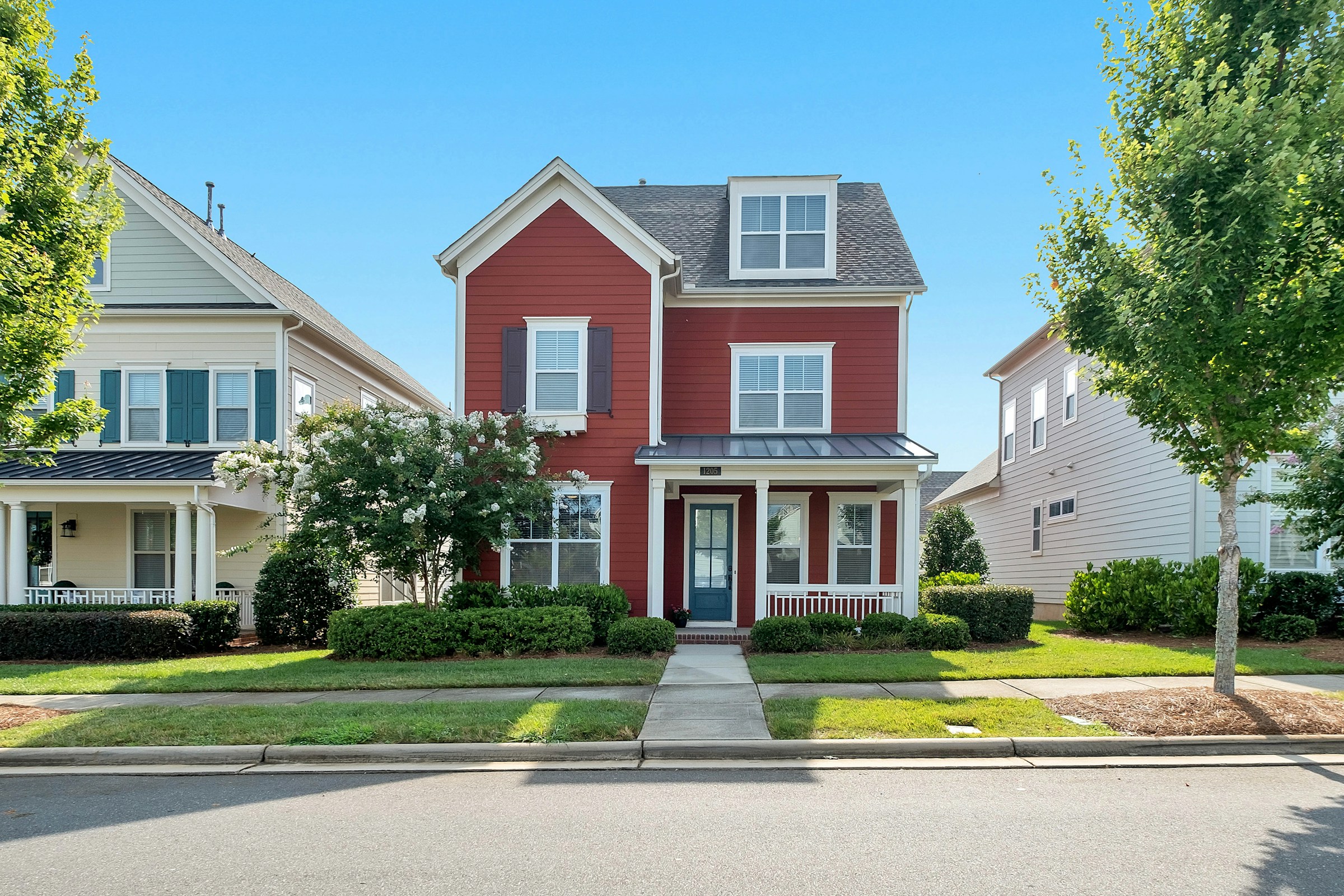Imagine you have found your ideal property in the picturesque Thames Valley. It is perfect in all aspects – a quaint house nestled amidst lush greens, close to the serene river Thames. However, before you sign on the dotted line, have you considered the potential flood risk associated with the property? Given the unpredictable climate change, flooding is a reality we might have to contend with more frequently in the coming years. Understanding the flood risk can save you from countless hassles and financial burdens later on. In this article, we will guide you on how to assess flood risk before purchasing a property in the Thames Valley.
Unraveling the Concept of Flood Risk
Flood risk refers to the possibility of your property being inundated by water, particularly in the event of heavy rainfall or a significant rise in the river’s water level. The Thames Valley, known for its scenic beauty, is also notorious for its susceptibility to flooding. This section will walk you through the basics of flood risk and its implications.
Cela peut vous intéresser : What are the unique challenges of renovating a thatched cottage in rural Dorset?
Flood risk is typically determined by factors like proximity to large bodies of water, the local environment, and the property’s elevation. Properties closer to the river or in low-lying areas are usually at a higher risk. Apart from potential water damage, flooding can cause other issues such as soil erosion and dampness, which can compromise the structural integrity of the house. Therefore, considering flood risk is as crucial as inspecting the property’s condition or amenities.
Delving into Flood Zones
The Environment Agency categorises areas into different flood zones based on their likelihood of flooding. This categorisation plays a crucial role in planning and development, but it can also inform prospective buyers about the flood risk associated with a property. In this section, we will understand what these zones mean and how they can guide your property purchase decision.
Sujet a lire : How does the presence of a conservation area influence property prices in Bath?
Zone 1 is considered a low-risk area, with a flood chance of less than 0.1% each year. On the other hand, Zone 2 includes areas with a medium risk, with a 0.1% to 1% chance of river flooding every year, and Zone 3 has a high-risk, with a greater than 1% likelihood of river flooding annually. The Environment Agency provides a detailed flood map for planning that can help you identify the flood zone of your potential property.
Checking the Local Climate and Environment
The local climate and environment can significantly influence the flood risk. Areas with high rainfall, inadequate surface water drainage or those near melting snowpacks are likely to experience flooding. It is essential to understand these factors to make an informed decision.
The Thames Valley has a temperate maritime climate, with rain spread throughout the year. Certain areas along the Thames have experienced significant flooding in the past, particularly during the winter months. Before purchasing a property, it is advisable to check the local climate trends and historical weather data. This allows you to understand the seasonal variations and the likelihood of extreme weather events that can cause flooding.
Indemnity through Flood Insurance
Another critical factor to consider is insurance. In areas prone to flooding, insurance is not a luxury but a necessity. Understanding flood insurance and its implications on your property purchase is key to safeguarding your investment.
In the UK, the Flood Re scheme has made it possible for homeowners in high-risk areas to access affordable flood insurance. Depending on the flood zone, the type and age of the property, insurance premiums may vary. Before purchasing a property, consult with an insurance agent to understand the potential costs and coverage options available.
Seeking Professional Advice
Finally, while you can do a substantial amount of research on your own, the advice of professionals in the field should not be underestimated. They can provide a more comprehensive and accurate assessment of the flood risk.
Property surveyors can conduct a thorough evaluation of the property and its surroundings. They can also provide a detailed flood risk report, highlighting potential problem areas. Additionally, local real estate agents with extensive knowledge of the Thames Valley area can provide valuable insights into previous flooding incidents and future risk.
While we cannot stop natural disasters, we can certainly prepare for them. Assessing the flood risk before purchasing a property in the Thames Valley, or any other flood-prone location, is an essential step towards making a secure and informed investment. By adopting a proactive approach, you can ensure that your dream house does not turn into a nightmare during a flood.
Evaluating Local Flood Defences
In assessing flood risk, the presence and effectiveness of local flood defences is of paramount importance. Flood defences include structures such as flood walls, embankments, flood relief channels, and sluices that have been designed to reduce the likelihood and impact of flooding. In this section, we’ll delve into how to assess the local flood defences in the Thames Valley before you make a property purchase.
The Thames Valley is a region that has long grappled with the issue of flooding and has, as a result, implemented a number of flood defences. The Thames Barrier, for example, is a movable barrier system located downstream of central London designed to prevent the city from being flooded by exceptionally high tides and storm surges moving up from the North Sea.
The Environment Agency has an interactive flood map that not only shows areas of potential flood risk, but also the locations of flood defences and areas benefiting from them. By checking this map, you can see if your potential property is near any such defences. However, keep in mind that even if a property is in an area benefiting from flood defences, it does not imply that it is completely immune to water flooding. Flood defences are designed to manage risk, not eliminate it entirely.
For more detailed information, you can request a flood history report from the Environment Agency or your local council, providing you with an idea of the effectiveness of nearby flood defences.
Understanding Flood Warnings and Mitigation Measures
The last step in your flood risk assessment before purchasing a property in the Thames Valley should be understanding flood warnings and mitigation measures. These are important aspects to consider as they can drastically improve your response and preparation during a flooding event, helping to minimise damage to your property.
Flood warnings are issued by the Environment Agency when there is a potential flood risk to an area. The levels of warning range from ‘Flood Alert’ to ‘Severe Flood Warning’. Registering for the Environment Agency’s flood warning service can provide you with crucial time to protect your property and evacuate if necessary.
Mitigation measures refer to steps taken to reduce the severity of flooding. They can be property-specific measures such as flood doors, barriers, and airbrick covers, or more extensive, community-level measures such as improved drainage systems or the creation of green spaces to absorb rainfall.
Before purchasing a property, inquire about the availability of these measures and how effective they are. This could be the deciding factor between a flood-resistant and a flood-prone property.
Conclusion
In conclusion, assessing flood risk before purchasing a property in the Thames Valley is a complex but necessary process. It involves understanding different types of flooding, flood zones, the local climate and environment, the presence and effectiveness of flood defences, the implications of flood insurance, and the availability and effectiveness of mitigation measures. By paying attention to these factors and seeking professional advice, you can make an informed decision and protect your investment from potential flood damage.
Remember, floods are a part of the natural dynamics of rivers and the sea, and with climate change, their occurrence may become more frequent. Therefore, a thorough flood risk assessment should be an integral part of your property buying process. It’s not about ‘if’ a flood will happen, but ‘when’, and your preparedness can make all the difference. The dream house in the picturesque Thames Valley can still be yours, with the right understanding and mitigation of flood risk.






